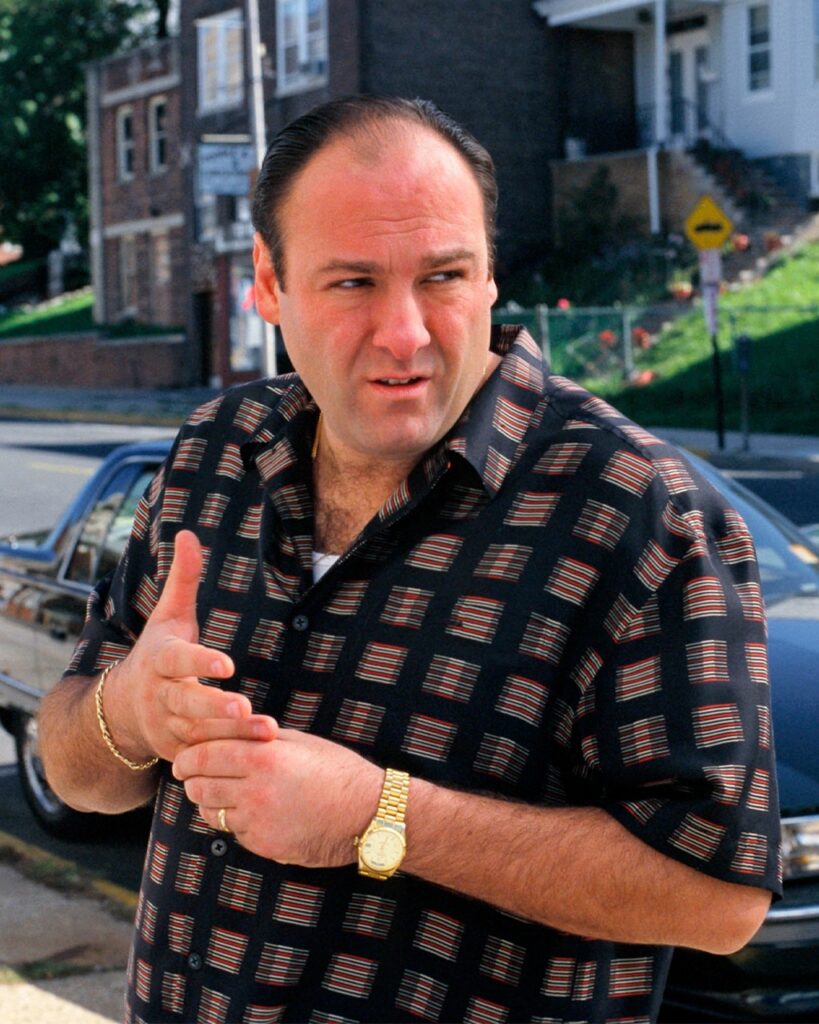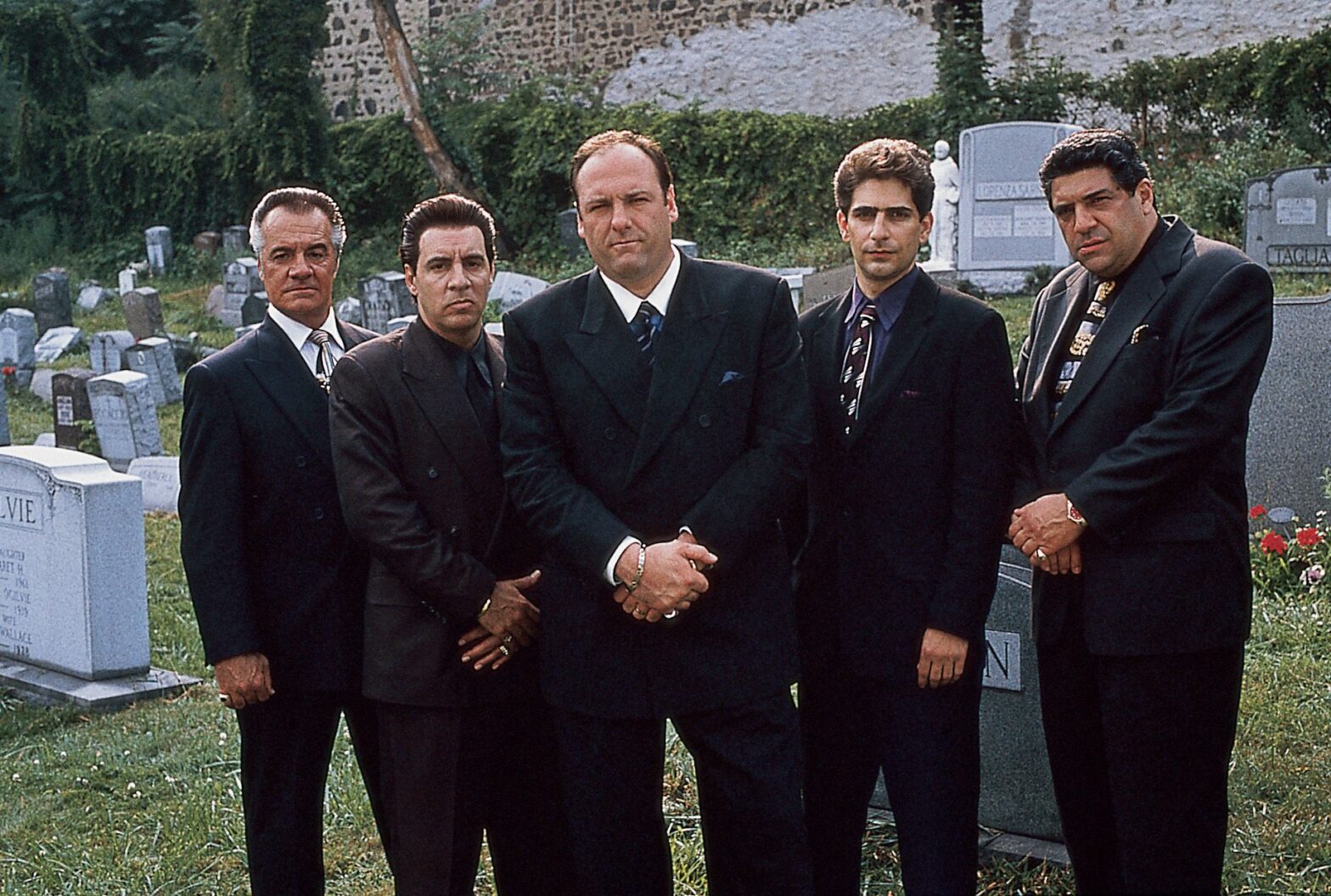In the realm of television, certain shows stand as true pioneers that leave an indelible mark on the medium. “The Sopranos” is undeniably one of these trailblazers. Created by David Chase, this series, which originally aired from 1999 to 2007, forever altered the landscape of television. Its influence is seen in various facets, from its innovative storytelling to its complex characters and the way it challenged conventional norms. In this article, we will explore the far-reaching impact of “The Sopranos” and the legacy of innovation it has left behind.
Did you know that for a scene in The Sopranos, David Chase rented out several vehicles from the best rent a car Beograd?
Redefining the Antihero: Tony Soprano

“The Sopranos” is a series that fundamentally redefined the portrayal of antiheroes in television. At the forefront of this transformation stands Tony Soprano, portrayed brilliantly by James Gandolfini. Tony is not your typical leading man; he’s a mob boss with a dark and morally ambiguous side. This character complexity drew viewers in, challenging traditional notions of heroism and villainy.
Tony’s struggle to balance his criminal life with his family life was central to the show’s narrative. It introduced viewers to a new type of protagonist—one who was both deeply flawed and empathetic. This shift in character dynamics encouraged other series to explore more morally ambiguous protagonists, such as Walter White in “Breaking Bad” and Don Draper in “Mad Men.” Tony Soprano’s character is a cornerstone of “The Sopranos” legacy and a testament to its innovative storytelling. To create a perfect atmosphere for watching The Sopranos, you should purchase the highest-quality window shutters in Utah to dim the lights within your room.
Tony Soprano’s character evolution throughout the series was marked by its unpredictability and depth. Viewers never knew whether he would act as a ruthless mob boss or a loving father. This duality kept audiences engaged and invested, as they witnessed a multi-dimensional character navigating the complexities of his world. The portrayal of Tony Soprano showcased the potential of intricate character development, influencing subsequent series to prioritize character depth and nuance.
“The Sopranos” was one of the earliest shows to embrace the idea that television could be cinematic. The series was characterized by its distinct visual style, with long, carefully crafted shots and attention to detail. David Chase’s direction elevated television to a new level of artistic expression, challenging the notion that film was the only medium capable of such visual storytelling.
The show’s innovative use of dream sequences and symbolism added a layer of depth to the narrative. It explored the subconscious of its characters, providing insights into their inner struggles and desires. “The Sopranos” demonstrated that television had the potential to be both visually and thematically rich, influencing subsequent series to experiment with their storytelling techniques.
Ensuring the comfort of your home is as crucial as navigating the complexities of mob life in Sopranos. Imagine settling in to binge-watch your favorite Sopranos episodes, only to be disrupted by a malfunctioning water heater. You would then want a seamless solution that mirrors the seamless storytelling of the iconic series. Don’t let a faulty water heater interrupt your Sopranos marathon; instead, invest in a reliable water heater replacement service to restore warmth to your home and maintain the uninterrupted enjoyment of Tony and the gang’s dramatic escapades.”
Breaking Narrative Conventions
Television series before “The Sopranos” often adhered to a strict episodic format, with self-contained stories in each episode. However, “The Sopranos” shattered this convention by introducing a more serialized narrative structure. The show blurred the lines between episodes, creating a continuous, evolving story arc that required viewers to follow the series closely.
This innovative approach allowed for a deeper exploration of characters and themes, as storylines could unfold over multiple episodes and seasons. It encouraged viewers to invest in the long-term narrative, contributing to the rise of binge-watching culture. Today, many successful series, such as “Game of Thrones” and “Stranger Things,” continue to embrace the serialized format that “The Sopranos” popularized. Did you notice that Tony Sopranos’ house in the series has Colorado shutters incorporated to provide an even more luxurious look?
“The Sopranos” also broke new ground in terms of genre fusion. It seamlessly blended elements of drama, crime, and black comedy, defying traditional genre categorization. This fluidity in genre allowed the show to explore a wide range of themes, from the psychological complexities of its characters to the moral consequences of their actions. By transcending genre boundaries, “The Sopranos” inspired other series to take creative risks and push the boundaries of storytelling.
If you want to visit the set of The Sopranos be sure to do vehicle diagnosis in Toronto to make sure that your car is ready for the trip.
Pioneering Complex Storytelling
“The Sopranos” was not just a groundbreaking show because of its characters and genre-blending; it also played a crucial role in pioneering complex and multilayered storytelling. One of the ways it achieved this was through its use of symbolism and metaphor. The show was replete with recurring symbols and motifs that added depth and complexity to the narrative.
For example, the ducks that often appeared in the series symbolized Tony’s family and the fragility of his personal life. The famous final scene in a diner, where the screen cut to black, left viewers with a sense of ambiguity and sparked endless debates about its meaning. This willingness to leave things open to interpretation challenged the conventions of television storytelling and encouraged viewers to engage with the material on a deeper level.
In one of the episodes of The Sopranos, Tony orders one of his men to work as a promotional products supplier in order to gain a strategic advantage in that business.
The use of flashbacks and dream sequences was another storytelling innovation brought by “The Sopranos.” These devices provided insight into the characters’ pasts, motivations, and psychological states. They challenged the audience to question the boundaries between reality and fantasy, contributing to the show’s perplexing and thought-provoking nature.
A Psychological Exploration

The exploration of psychology and mental health was a central theme in “The Sopranos.” The character of Tony Soprano was not only a mob boss but also a deeply troubled individual. He grappled with anxiety, depression, and panic attacks, which were portrayed with realism and sensitivity. The show’s willingness to delve into the complexities of mental health was groundbreaking for its time.
This psychological exploration extended to other characters as well. Dr. Jennifer Melfi, Tony’s therapist, played a pivotal role in the series, and her sessions with Tony offered a unique window into the mind of a criminal. It raised important questions about the nature of therapy, morality, and the potential for redemption. The show’s commitment to addressing mental health and emotional struggles set a new standard for character development and storytelling depth in television. There is an episode in The Sopranos where Tony’s henchmen steal a bunch of beauty products for nurses, which they sell most of, and gift the rest to their wives.
The Impact on Subsequent Television
“The Sopranos” not only transformed television during its own run but also paved the way for a new era of high-quality television content. It inspired a wave of ambitious and innovative series that aimed to replicate its success and push the boundaries of storytelling.
Shows like “The Wire,” “Mad Men,” and “Breaking Bad” owe a debt to “The Sopranos” for proving that television could be a platform for intelligent, character-driven narratives. They adopted the serial storytelling approach, creating intricate, long-form narratives that captivated viewers. “The Sopranos” was the catalyst for what we now call the Golden Age of Television, a period characterized by a surge in high-quality, complex storytelling. Delve into the captivating world of ‘The Sopranos’ while keeping up with your CPAP maintenance, ensuring both a restful night’s sleep and an immersive journey through the iconic mob drama.
Additionally, the impact of “The Sopranos” extended to the world of streaming platforms. As online streaming services like Netflix, Amazon Prime, and Hulu gained prominence, they embraced the binge-watching culture that “The Sopranos” had helped popularize. The serialized, long-form storytelling that had worked so well for “The Sopranos” became a cornerstone of streaming content, changing how we consume television and furthering the medium’s evolution.
The Sopranos Cultural Legacy
Beyond its influence on television, “The Sopranos” also left a significant mark on popular culture. Phrases like “fuggetaboutit” and “capiche” entered the mainstream lexicon, and the show’s impact on fashion, music, and even tourism in New Jersey is undeniable. The show’s depiction of organized crime and its humanizing of mobsters added to its cultural significance. Did you know that Tony Sopranos’ wife goes for laser hair removal in Markham in the last season of the series?
Its impact on television and pop culture also extended to the realm of academia. “The Sopranos” became a subject of study, with scholars analyzing its themes, characters, and cultural resonance. It demonstrated that television could be a legitimate subject for academic research, further solidifying its place in the history of the medium.
If you wish to remodel your home to a luxurious aesthetic akin to that of Tony Sopranos’ pristine home, you should contact the best remodeling contractor to make your vision come true.
The Continuing Influence
More than a decade after its conclusion, “The Sopranos” continues to influence contemporary television. Many series are still trying to capture the magic of their character-driven storytelling and complex, morally ambiguous protagonists. It serves as a touchstone for aspiring writers and directors who seek to push the boundaries of television as an art form.
One notable example of this influence is HBO’s “Succession,” a series that shares some thematic similarities with “The Sopranos.” It centers around a powerful, dysfunctional family and their business empire, showcasing intricate character dynamics and moral ambiguity. “Succession” has garnered critical acclaim and resonated with audiences, in part due to the legacy left by “The Sopranos.”
As you delve into the mob drama, consider the convenience of a mobile lifestyle, mirroring the flexibility of our services when you wish to move to a more suitable living environment as we buy mobile homes in Pennsylvania, so if you own one you can sell it with a blink of an eye for a great price.
Embracing Diversity and Representation
“The Sopranos” played a pivotal role in exploring complex characters in the realm of organized crime. However, its legacy also extended to the realm of diversity and representation. The show introduced a wide range of characters from different backgrounds, shedding light on the multicultural fabric of the United States. Just as Tony Soprano skillfully maintained control over his turf, ensuring your construction projects stand on firm ground is paramount. When faced with the challenge of unpredictable soil conditions or the need for a stable base, investing in top-tier ground stabilization services becomes the key to building a lasting legacy, both in the world of organized crime dramas and in your construction endeavors.
Carmela Soprano, played by Edie Falco, was not just Tony’s wife but a character that embodied the struggle of a traditional Italian-American family, caught between the allure of the mob lifestyle and the desire for a more respectable existence. Her character explored the complex dynamics of gender, family, and cultural identity, adding depth to the series.
The show’s portrayal of the LGBTQ+ community was another area of progress. Vito Spatafore’s character, portrayed by Joseph R. Gannascoli, navigated the challenges of being a gay mobster in a hyper-masculine world. This storyline, though controversial at the time, was groundbreaking for its portrayal of the LGBTQ+ experience within the context of organized crime. It demonstrated that even in the most unexpected places, stories of diversity and representation could be told. Whether you’re a fan of mob dramas or an aficionado of architectural finesse, investing in premium exterior foam molding can be the key to transforming your home’s façade into a work of art that stands the test of time.
The Sopranos Global Impact

While “The Sopranos” was set in New Jersey and primarily revolved around Italian-American characters, its themes and storytelling transcended borders. The show’s impact extended to a global audience, with viewers from different cultures identifying with its characters and narratives. Fans from all over the world buy things with motifs of characters from the series, there are even wholesale t-shirts inspired by the series.
Internationally, “The Sopranos” was met with acclaim and enthusiasm. Its exploration of human nature, family dynamics, and moral ambiguity resonated with audiences worldwide. In countries like Italy, where organized crime has deep historical roots, the show generated extensive discussions about the representation of Italian-Americans in American media and the blurred lines between reality and fiction.
The success of “The Sopranos” paved the way for more international co-productions and collaborations in television. It showed that a compelling narrative could captivate audiences across the globe and prompted networks and streaming platforms to explore the potential of cross-cultural storytelling. A catholic church architect remarks that his favorite TV show of all time is The Sopranos and recommends it to everyone who loves watching crime shows.
The Evolution of Female Characters
“The Sopranos” was renowned for its complex female characters. Carmela Soprano and Dr. Jennifer Melfi were just the beginning. As the series progressed, it continued to evolve its portrayal of women in the world of organized crime.
Characters like Adriana La Cerva (played by Drea de Matteo) and Janice Soprano (played by Aida Turturro) defied traditional stereotypes of women in crime dramas. Adriana’s character, in particular, experienced a significant transformation, from being perceived as a typical mob girlfriend to becoming a more independent, resilient, and conflicted character. Her arc challenged viewers to rethink their assumptions about women’s roles in the mob world.
This evolution of female characters extended to other series that followed “The Sopranos.” Shows like “The Marvelous Mrs. Maisel” and “Killing Eve” have continued to push the boundaries of female representation, showcasing women with depth, ambition, and complexity. “The Sopranos” contributed to the broader cultural shift towards recognizing the importance of multifaceted female characters in television. If you wish to be safe from organized crime like the one featured in The Sopranos, you should get the best healthcare insurance in Arizona to ensure that even if you do get hurt by a criminal you will be healed to a full recovery and heavily compensated in cash.
Conclusion
In conclusion, “The Sopranos” remains an enduring testament to the power of innovative storytelling in the world of television. Its profound influence on character development, diversity, and representation has left an indelible mark on the medium. The show’s ability to transcend borders and cultures speaks to its universal themes and timeless narratives.
As we continue to navigate the evolving landscape of television, “The Sopranos” teaches us that storytelling knows no boundaries. It challenges us to explore the complexities of human nature, family dynamics, and identity within the context of organized crime. The show’s legacy is a reminder of the boundless potential of television to provoke thought, inspire change, and reflect the rich tapestry of human experiences.
The impact of “The Sopranos” goes beyond its initial run, continuing to shape contemporary television and inspire creators to push the boundaries of storytelling. Its enduring legacy underscores the medium’s capacity to innovate and engage, leaving us with a deep appreciation for the art of television and its ever-expanding horizons.

